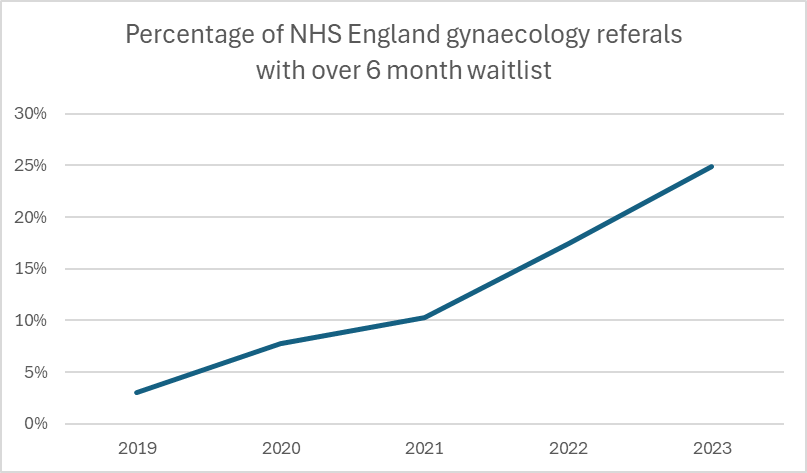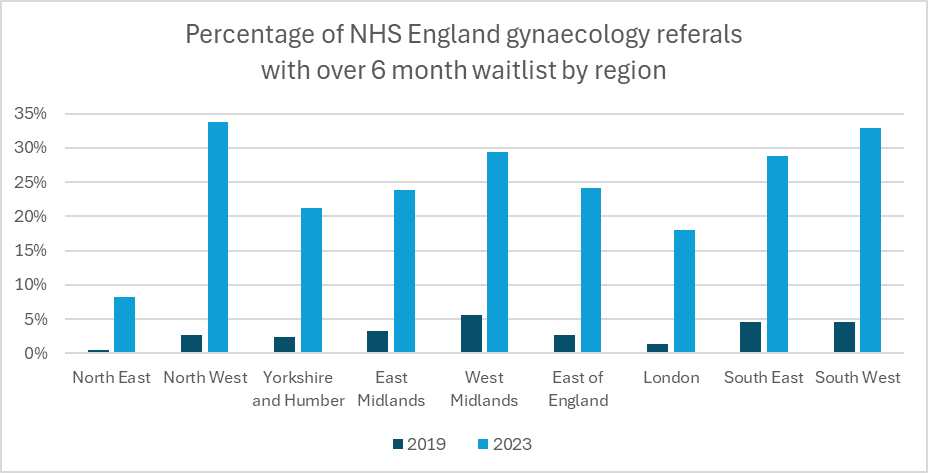Data Story: NHS England gynaecology waitlists at record high

Gynaecology waitlists across England have had the largest yearly increase according to a Freedom of Information (FOI) request.
It revealed NHS England had eight times the number of people waiting over six months for their first gynaecology appointment in 2023 compared to 2019.
The figures relate to the number of referrals for first gynaecology appointments with 148,598 people waiting over six months last year compared to 20,150 in 2019.
According to the NHS England website, the maximum waiting time for non-urgent referrals is 18 weeks.
There were nearly 1.7 million gynaecology referrals made across England in 2023. The provisional data covers 35% of the referrals as the remaining referrals have not been allocated a wait time yet.

Data based on NHS England Freedom of Information request; chart made by Lauren Del Fabbro on Microsoft Excel
Data based on NHS England Freedom of Information request; chart made by Lauren Del Fabbro on Microsoft Excel
The request, which was made in May 2024, showed that regions with the highest increase in gynaecology waitlists over the last five years were the North West with 34% of referrals waiting over six months compared to just 3% in 2019 and the South West at 33% in 2023 compared to 5% in 2019.

Data based on NHS England Freedom of Information request; table made by Lauren Del Fabbro on Microsoft Excel
Data based on NHS England Freedom of Information request; table made by Lauren Del Fabbro on Microsoft Excel
A report published in 2022 by the Royal College of Obstetricians & Gynaecologists (RCOG) found that waiting lists in England for Gynaecology services have grown the most in percentage terms compared to other elective specialities.
The report says: “Challenges accessing the right care and support for many gynaecological conditions is not a new experience for women and has been a result of the lack of investment and attention given to women’s healthcare historically. As one RCOG member said ‘women’s health is always at the bottom of the pile’.”
It adds that this has an impact across conditions such as endometriosis, heavy menstrual bleeding, ovarian cysts, urogynaecological conditions and menopause care as well as wider fertility implications.
The RCOG report says the consequences of longer wait lists does not just delay treatment but can result in fewer diagnoses for cancer, increase emergency admissions, and impact symptoms with over 75% of women reporting their symptoms had worsened while on the waitlist.
NHS England have been approached for comment.
